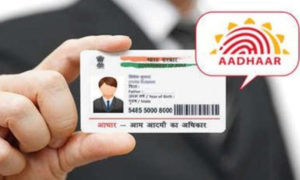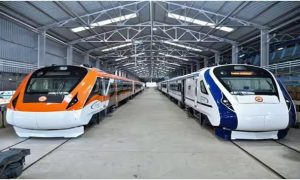‘PM-Surya Ghar: Muft Bijli Yojana’ was launched on Feb 13 with a 75,000-Cr kitty. It will help 1-Cr houses set up rooftop solar units and contribute to green goals
Read More: Lost Your Debit Card? Take These 7 Immediate Steps
How will users benefit?
Installing rooftop solar panels will provide a household with a monthly supply of up to 300 units of free power and estimated annual savings of Rs 15,000-Rs 18,000, depending on the size of the rooftop capacity and consumption. Households can also earn money by setting up charging stations for electric two-three wheelers/cars, especially in rural areas.
Who is eligible to apply? And how?
All households can apply but the subsidy is available for rooftop systems of up to 3 kilowatt (kW or 3,000 watt) capacity. Applications can be submitted at https://pmsuryaghar.gov.in and the portal also helps with calculations regarding the appropriate capacity for the rooftop system and its benefits.
Are there any preconditions?
Households have to use ‘Made in India’ solar panels and get the system installed by a govt-empanelled vendor (as listed on the portal) to be eligible for subsidy. Battery storage is not allowed if a household wants subsidy.
What does the subsidy cover?
Financial assistance is available for systems of only up to 3kW capacity. The subsidy covers 60% of the cost of a system of up to 2kW capacity and 40% of the additional cost for systems between 2 and 3 kW capacity. That amounts to a subsidy of about Rs 30,000 for systems of 1kW capacity, Rs 60,000 for 2kW and Rs 78,000 for 3kW or higher capacity. The subsidy is to be paid directly into the beneficiary’s bank account after rooftop panels have been installed and due diligence has been done by govt officials.
Does The User Have To Pay Anything?
Households have to foot at least 40% of the cost upfront, which is the balance left after the subsidy is applied. There are indications that central power companies will be roped in to set up rooftop systems for economically weak families living in smaller houses, especially those built under PM Awas Yojana, if they are found unable to make the initial investment. In such cases the subsidy will go to the power PSU, which will also make the upfront investment. Households can also avail of loans at concessional rates to fund the initial investment.
Read More: Big News For Bank Employees: 17 Percent Annual Wage Hike Announced; 5-Day Work Week Next?
What’s different in new scheme?
The new scheme offers a higher subsidy than Phase-II of the residential rooftop solar programme that was launched in March 2019. Applications for subsidy submitted before Feb 13 will, however, get govt support under the old scheme.
What’s the cost of a rooftop system?
A rooftop system is priced according to the number and size of solar panels, their specifications as well as efficiency. Quality of mountings and peripheral electronics also determine the cost. A 1kW rooftop system can cost upwards of Rs 72,000 and a 3kW unit over Rs 1.6 lakh.
What solar panels to use?
One can choose monofacial or bi-facial panels. In either case, the efficiency rating determines the total energy output and represents the amount of sunlight converted into energy. The panels have a lifespan of 25 years, but continue to produce power at lower levels thereafter.
How many panels are needed?
Most 1kW systems comprise 3-4 solar panels of 250-330 watts each. High-efficiency panels bring down the number needed to generate the rated power output. The number of panels increases as the capacity rises.
How is power generation calculated?
It’s done via net metering, which transforms consumers into ‘prosumers’ and allows households with rooftop systems to sell surplus energy to the utility grid.
How does net metering work?
When solar power generation is less than the load, the household draws power from the grid through the regular connection and the consumer is charged for the number of units used. When solar generation exceeds the load, the surplus flows into the distribution network through the grid connection.
Read More: BoB announces offers for women account holders
At the end of the billing cycle, depending on whether a household has drawn more than it has supplied or is a net contributor to the grid, it is either charged for the power used or paid for the number of units fed into the main line. The positive balance may also be carried forward to the next billing cycle.



































